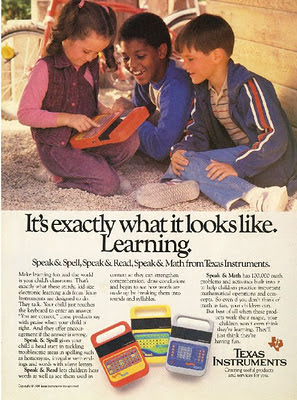The new digital divide
Steve Jobs passed away last week.
Kieran Healy wrote a wonderful examination of his role at Apple. But there is one thing in there that bears a closer look:
Jobs wanted people to love his products, take care to notice their craftsmanship, and be creative with them. They were supposed to help you make and do awesome things. But this love and attention to creativity was not extended to those involved in the manufacturing process.I've been meaning to write about this subject, and now seems a good time.
The iPad, the iPhone, and the Apple App Store are not leading to a new age of digital freedom and creativity. They are creating the real digital divide.
Original PCs used to ship with a Basic interpreter. When that stopped, you could still get a programming language implementation without too much trouble. But Apple goes out of its way to make the iPad and iPhone not programmable by anyone except a self-selected caste of "developers."
The awesome things you can do with the iPad have very real limits. Limits that are unnecessary, artificially imposed, and at core opposed to iPad's essence as a programmable computer.
Ellen Rose wrote about the infantilization of computer "users" in User Error: Resisting Computer Culture, but few products until the iPad have shown how literal this effect is. Consider Apple's marketing:

Does the above image remind you of anything?

Further evidence of how literal the infantilization has become is the infamous "fart app" - it is nothing but a direct throwback to the anal stage of Freud's model.
Richard Stallman made a poorly received comment on Jobs' legacy upon news of the latter's death. I think the negative consequences of the iPad extend well beyond Apple's hostile and exploitative stance towards Free Software
6 comments:
Isn't the anal stage of Freud's model where you forcefully withhold the fart?
Funny thing is, you can get a BASIC interpreter on the iOS App Store.
http://itunes.apple.com/us/app/commodore-64/id305504539?mt=8
I would also disagree with your assertion that the experience is watered down; after all, the devices themselves are consumer devices, not machines for programming. I have a MacBook Pro for my development work, but I have an iPad for entertainment; and I've never wanted it any other way (despite the face that I use http://www.textasticapp.com/ for on the spot bug fixes with my iPad).
The learning experience for children with iDevices has improved wholeheartedly as well; Apple's marketing aside, I've done some HCI-research into kids and direct-manipulation User Interfaces, and the iPad had ushered in such study since kids love the devices.
IMHO these products being consumer devices doesn't prove your point Alan. It proves just the opposite. These products are very capable and programmable machines that are intentionally reduced to consumer device level, masterpieces of "design for the dummy user" philosophy, which of course mostly promotes a different kind of creativity, dummy creativity. i.e it promotes a photography culture -in which the threshold to good photography is so low, that they completely rely on quick post-production effects that are applied in two seconds automatically. No one needs to think about composition, color scheme, cognitive or historical meanings of effect filters, just apply it and share. It is easy, quick! But it is not really creative, sorry.
I wonder if MIT could ask for Scratch to be put back on the Apple Store. Hasn't the license been relaxed since then? After all there are now Scheme (At least two) and Lua (Codify) interpreters available for the iPad.
alan and The Careful Programmer, I was almost convinced by your examples until I heard Marc Feeley speak about his experiences in getting Gambit REPL (one of the Scheme interpreters available for iOS) into the Apple app store.
Now I'm convinced that the Apple app store people are digital fascists.
Hey Vladimir,
Actually I think even programming an iPad is easier today that programming was when I started by hacking m68k Assembler and C. The development environment is actually for free and its actually quite ok.
But thats actually not the real point: Contrary to what some hype people tell, the "tablets" are NOT a replacement for plain PCs. Tablets are devices which make consuming services easy and ultra portable. I use the iPad to access OS X boxes, MS Windows boxes and Linux boxes all the time. I often hack on the iPad. Its much more a thin client thing.
As a professional - the iPad is either a thin client to all the boxes I code on. Its a really fascinating tool and it obsoleted my notebook for me. At the same time - Xcode is free and the development plan not really expensive. So if you really want, there is alot of choice: if you only develop for your own use - (or some dozens of devices) you can code up anything you want. Apple's Rules only apply if you want to distribute at the AppStore.
Regarding the learning experience for children: I have a little daughter - she is only 3 years old and already has grasped how to use that thing. If I look at apps like Codify, I really think that the iPad could also make a good base to learn programming.
Post a Comment